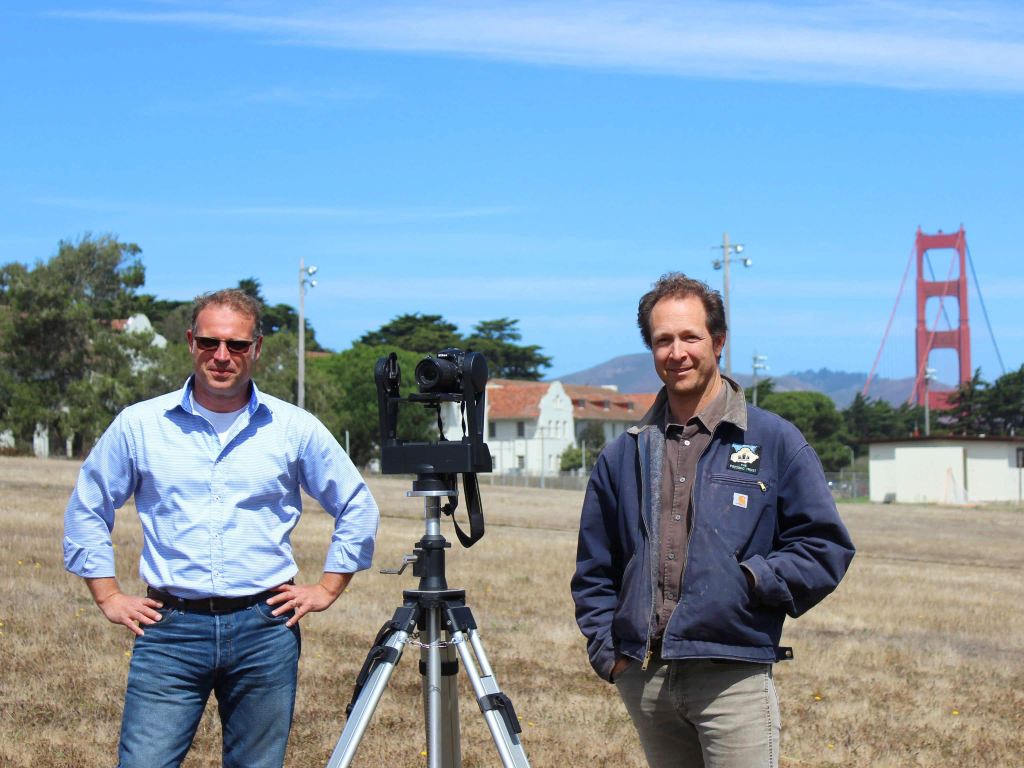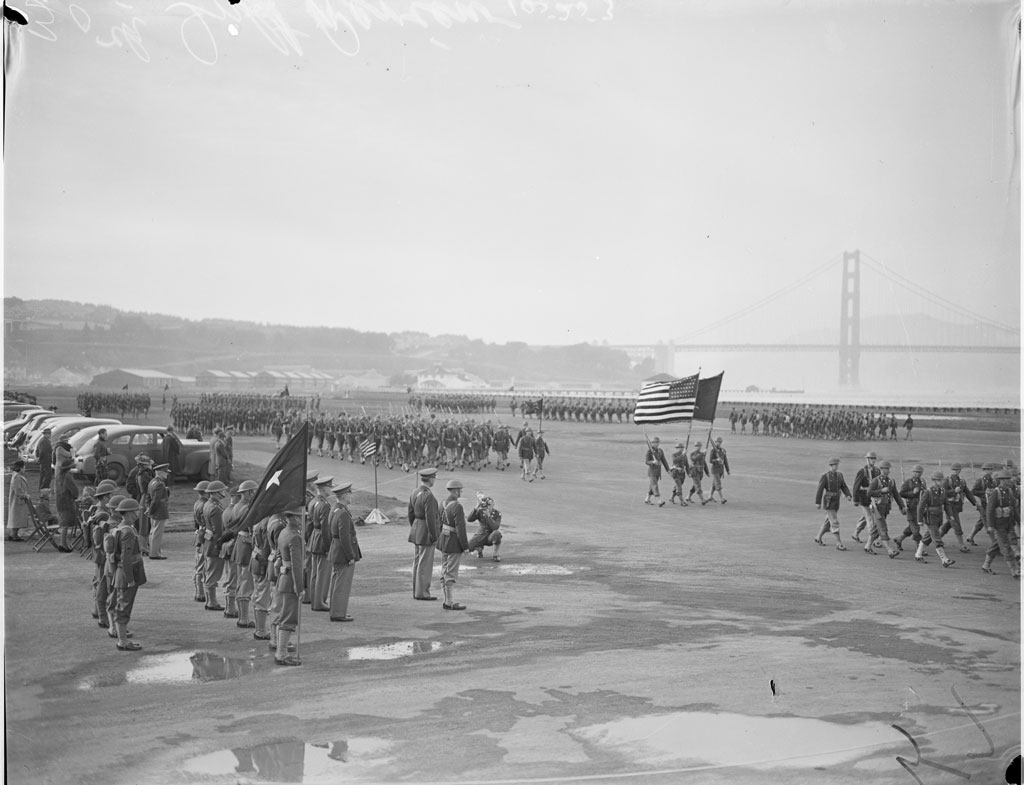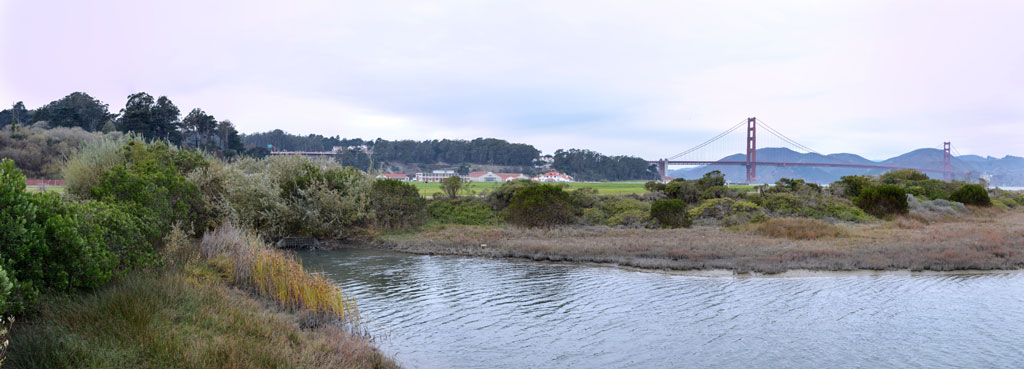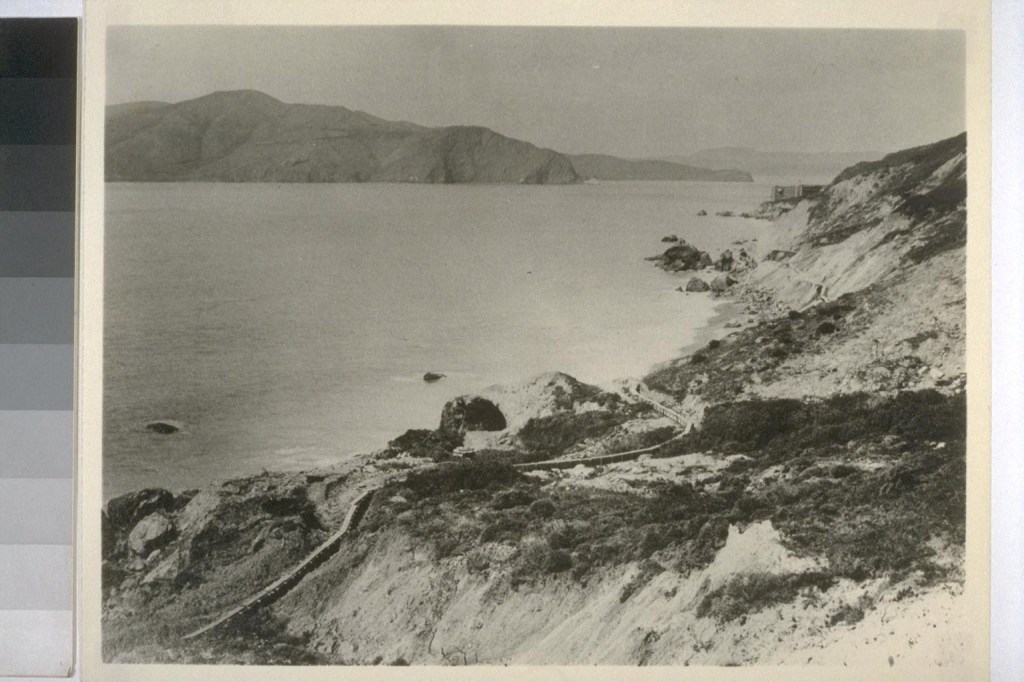Sep 12, 2016
Then + Now: Presidio Time Machine
An ecologist and GIS specialist are using technology to show the evolution of natural landscapes.Presidio Trust ecologist Lew Stringer and GIS specialist Hans Barnaal have developed a Presidio Time Machine that helps illustrate the evolution of natural landscapes in the park. We talked to them about how this project began and what they’ve discovered through its creation.
What do you do at the Presidio?
Lew: I’m a restoration ecologist and first started working at the Presidio in 1997 for the Golden Gate National Parks Conservancy on the Crissy Field restoration. I later worked for the National Park Service. Then I came over to the Presidio Trust in 2009. My job here is to plan and implement ecological restoration projects. I investigate the “historical ecology” of sites and design changes that will allow native plants and wildlife to thrive in a healthy and functioning ecosystem.
Hans: I’m the GIS [Geographic Information Systems] specialist with the Presidio Trust and create mapping information throughout the park. I’ve worked extensively with our natural resources team to use mapping information for native restoration projects. I’ve also done a significant amount of work with the Presidio’s archaeological program to find, document, and preserve the Presidio’s archaeological resources. I’ve studied a wide range of historic maps to help our archaeologists understand the historic landscape. Knowledge of these maps helped us find the locations of the historic photos which are the subject of our exhibit.

What’s re-photography?
Lew: Re-photography is the process by which photos from different time periods are taken from the exact same location and presented so the viewer can easily see the differences over time in the locations.
What’s the “Presidio Time Machine”?
Lew: It’s an interactive exhibit that allows visitors to view historical and contemporary images to see how things have changed in the park over time. The Time Machine began as a long-term photo monitoring program where we took photos from the same location over time so we could track the progress of restoration projects. We soon realized that our old method wasn’t getting the results we wanted in showing the scale of the changes our ecological restoration projects were bringing to the Presidio’s wildlands. So, we experimented with new digital technology and developed a method that really helped us see these changes.
How did you come up with the idea to do this?
Hans: I saw a fascinating re-photography exhibit on the historic landscapes of Norway. Knowing the treasure trove of historical photos we have of the Presidio, I immediately realized this approach could be very compelling here. Lew and I teamed up to locate where historic photos were taken, and find our way back to the same places in the park in the present. We’re now able to show what a place was like before, how it evolved, and what it became. We’re also using this process to document projects we’re currently working on in the park.
Lew: Re-photography has actually been a long tradition in national parks – it’s used to show the scale of landscape change. What we’re bringing to this tradition is innovation. We’re taking digital photography of the landscapes and creating interactive overlays with the help of computer code.
Did you find any surprises along the way?
Lew: We found Dwight Eisenhower perched in the middle of the historic image at Crissy Field in what is now a restored salt marsh. The historic photo was taken in 1941, well-before he was president. [Note: See the image below of Crissy Field.]
Hans: I was surprised by how much transformation has occurred in places that I thought I knew so well.

Then: 1941 – The 30th Infantry review, Crissy Field. This image shows Crissy Field paved over and Lieutenant Colonel Dwight D. Eisenhower (General Thompson’s Chief of Staff and future United States President) in the image (middle of second row facing the photographer).

Now: 2015 – Contemporary image of the restored Crissy Marsh.

Then: 1870 – Image of the Golden Gate taken circa 1870 showing a water flume that transported potable water from Lobos Creek to the growing city of San Francisco before the Golden Gate Bridge was constructed.

Now: 2015 – Contemporary image of the same spot, now with the Golden Gate Bridge in view (see the above header image that shows re-photography with these two images overlaid).
